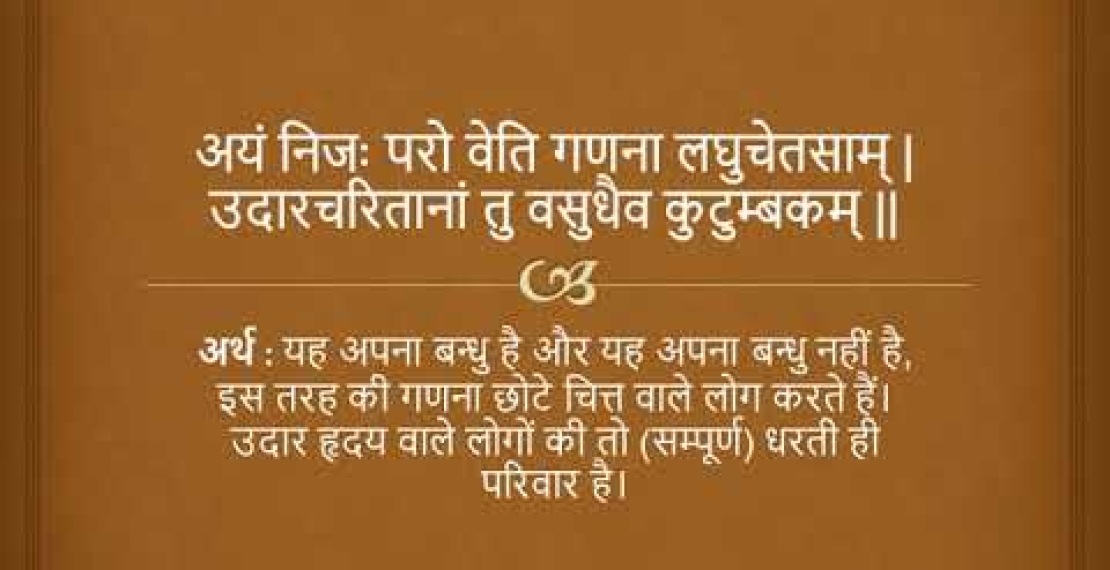A subhashita (Sanskrit: सुभाषित, subhāṣita) is a literary genre of Sanskrit epigrammatic poems and their message is an aphorism, maxim, advice, fact, truth, lesson or riddle. Su in Sanskrit means good; bhashita means spoken; which together literally means well-spoken or eloquent saying.
Subhashitas in Sanskrit are short memorable verses, typically in four padas (verses) but sometimes just two, but their structure follows a meter. Subhashitas is one of many forms of creative works that have survived from the ancient and medieval era of India, and sometimes known as Suktis. Ancient and medieval Indian literature created tens of thousands of subhashitas covering a vast range of subjects.
Philosophy
Subhashitas are known for their inherent moral and ethical advice, instructions in worldly wisdom and guidance in making righteous deeds. Subhashitas create an appeal as the inherent message is conveyed through poems which quote practical examples which are often rhythmic in nature. Some authors even relate Subhashitas to sugar-coated bitter medicines considering their worthiness.
The subhashita deals with various subjects and includes topics of day to day experiences that everyone can easily relate to. A subhashita is always eloquent in form, structured in a poetical form, complete in itself and concisely depicts a single emotion, idea, dharma, truth or situation.
Structure
Subhashitas are structured in pada-s (Sanskrit: पद, or lines) in which a thought or a truth is condensed. These epigrammatic verses typically have four padas (verse, quatrain), are poetic and set in a meter. Many are composed in the metrical unit called Anuṣṭubh of Sanskrit poetry, making them easy to remember and melodic when recited. But sometimes Subhashitas with two pada-s or even one pada proclaim a truth.
According to Mohana Bhāradvāja, Subhashita in Indian Literature is a single verse or single stanza, descriptive or didactic but complete in itself expressing a single idea, devotional, ethical or erotic in a witty or epigrammatic way. Author Ludwik Sternbach describes that such wise sayings in poetic form not only contain beautiful thoughts but they also make the expressions in the cultivated language. He further says that such form of Indian literature had a tinge of poetry, the poetical skill being exhibited in the intricate play of words which created a slight wit, humour, satire and sententious precepts; they arose laughter, scorn, compass and other moods. The poetic style of narration found in Subhashita is also termed as muktaka (independent), as the meaning or the mood of which is complete in itself. This poetic form has been compared to Persian rubai or Japanese tanka by some authors.
Sources
The authors of most Subhashita are unknown. This form of Indian epigrammatic poetry had a wide following, were created, memorized and transmitted by word of mouth.
The works of many ancient Indian scholars like Bhartṛhari (5th century CE), Chanakya (3rd century BC), Kalidasa (5th century AD), Bhavabhuti (8th century AD), Bhallata (10th century AD), Somadeva Bhatta (11th century AD), Kshemendra (11th century AD), Kalhana (12th century AD) are considered to be treasures of many valuable subhashitas.[6] The famous Panchatantra (3rd century BC) and Hitopadesha (12th century AD) which is a collection of animal fables effectively use subhashitas to express the inherent moral wisdom of their stories. The Vedas and ancient scriptures like Bhagavad Gita, Puranas, Ramayana, and Mahabharata are also major sources of Subhashitas.

